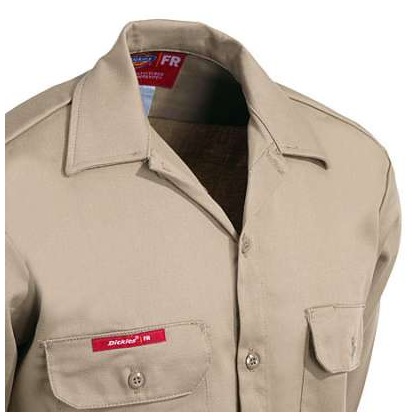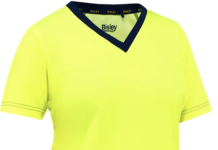FR Apparel Standard in the United States
Flame resistant (FR) apparel is essential to the safety of workers everyday throughout the United States. It is not only important but manditory to protect workers and ensure they are wearing clothing that is dependable and safe. To enforce this the United State adopted a federal flammability standard (16 CFR PART 1610) of the Flammable Fabrics Act (FFA) in 1954. 16 CFR PART 1610 ultimately aims to reduce the risk of injury or loss of life by establishing national standards for methods of testing and rating the flammability of all clothing textiles. The standard rating is determined by measuring two fabric attributes: ease of ignition and speed of flame spread.
When testing, the textile is mounted at a 45 degree angle and exposed to a one-second ignition. If the textile ignites, the flame spreads or the time to burn five inches in length is recorded.
How to Test and Measure Flame Resistance
All types of fabric and fiber blends are tested to measure their flame-resistance. The most common test is Method 5903.1 of Federal Test Standard 191A (Flame Resistance of Cloth: Vertical). The test takes place in an enclosed cabinet where 12-inch long garments are suspended vertically in a holder. The garments are also restrained on three sides. A controlled flame is then held on the bottom edge of the garment for 12 seconds. At the end of the 12 seconds, the flame is extinguished and data is recorded.
Three types of data is recorded including:
Afterflame: The time (in tenths of seconds) the garment continues to visibly flame after the controlled flame has been removed.
Afterglow: The time (in tenths of seconds) the garment continues to glow after the controlled flame has been removed.
Char Length: The length (in tenths of inches) the garment was destroyed by the controlled flame.
Each testing evaluates the five pieces of each fabric. The five sets of data are averaged for the final test result.
Three Classes of Fabric Flammability
Once fabrics are tested and measured, they are classified. There are three different classes that fabrics can be placed into. Each class is determined by the amount of times it take for a flame to spread or ignite.
The three classes are:
Class 1: Normal Flammability – 4 seconds or more. Fabric may or may not ignite when exposed to the standard one second ignition source.
Class 2: Intermediate Flammability – 4 to 7 seconds and the base fabric ignites.
Class 3: Rapid, Intense Burning – Less than 4 seconds. Fabric is dangerously flammable and not suitable for clothing.
Now that you know how fabrics are tested, measured and classified, it’s important to know how to protect yourself from common causes of ignition and burning of work apparel.
Common Ignition and Burning Causes of Apparel
1.Electric discharges, especially high energy.
2. Electric arcs events.
3. Close proximity or contact with molten metal.
4. Coming in contact with sparks or slag from welding or flame cutting.
5. Coming in contact with open flames.
6. Flammable liquids or gasses on the garment.
7. Combustible dusts.
8. Explosion of vapors from flammable gasses or volatile liquids.
Proper Safety Standards for Workers Who Wear FR Apparel
For workers who are exposed to flash fire hazards, the NFPA 2112 Standard on flame-resistant Garments for Protection of Industrial Personnel Against Flash Fire and its companion, NFPA 2113 are used to maintain safety. The Standard explains the requirements needed for proper worker safety:
-Flame resistance of all layers of the garments needs to be maintained from through 100 cycles of washing and drying and/or dry cleaning.
-Thermal Protective Performance (TPP) must be tested in two ways:
1. The fabric garment must be in contact with the sensor assembly. A minimum TPP rating of 3.0 if required for the contact method.
2. The fabric garment must separated from the sensor by a 1/4 inch spacer. A minimum TTP rating of 6.0 is required for the spacer method.
-Coveralls made from candidate fabrics to a standard pattern are tested for overall flash fire exposure on an instrumented mannequin in accordance with ASTM Test Method F 1930. The exposure time in 3.0 seconds with a heat flux of 84 kW/m^2. The average total predicted body burn must not exceed 50%.
Professional Fire Fighters are protected under the National Fire Protection Association (NFPA) standard NFPA 1975. This standard establishes standards for the garments used in construction of station/work uniforms worn by emergency services personnel. All fabrics must meet minimum performances and certification requirements and all fabrics used must be FR.
In 1999, an update to the standard was added that included the use of flexible performance equipment and it allowed uniforms to be constructed from either FR materials or from untreated 100% cotton or wool fabrics.
Workers who are exposed to electric power generation, transmission and distribution need to follow OSHA’s Final Rule on Electrical Protective Equipment (OSHA 1910.269). This rule prohibits a worker from wearing any clothing that, when exposed to flames or arcs, could increase the likelihood of injury. Clothing made from FR materials that meets the requirements of ASTM F 1506 are acceptable for wear. Under limited conditions identified by OSHA, untreated cotton and wool garments weighing at least 11.0 oz are also acceptable.
There are also specific garment requirements for workers who are exposed to electric arcs. All garments must have threads, findings and closures that will not increase the risk of injuries. Any fabrics that are knit or woven must not melt or drip and cannot have an Afterflame for more than 2.0 seconds or a Char Length of more than 6.0 inches. Additionally, all garments cannot have an Afterflame of more than 5.0 seconds in an electric arc exposure test. All garments worn by workers must have an arc rating on the label.
Arc and FR rainwear requirements are established under ASTM Standard Specification F1891. This standard identifies test methods, minimum physical and thermal performance requirements, a sizing guide and purchasing information for workers. FR rainwear must withstand 30 PSIG water pressure without leaking, garment seams must show a hydrostatic resistance of 3 psi for 2 minutes and all products must not melt or drip and cannot have an Afterflame for more than 2.0 seconds or a Char Length of more than 6.0 inches. The Arc Rating must be equal or greater than 5.0 cal/cm^2.
Lastly, all products must be clearly labeled that state the garments meet the standard specified.
Responsibility of Employer
You are not the only one responsible for knowing how the flammability standards, you’re employer is required by law to know them too.
Paragraph 5a1, the General Duty clause of the federal OSHA Act, states that you’re employer is responsible for identifying risks and hazards in the workplace as well as seeking out the right protective garments and equipment to protect you and your coworkers.
Which FR Product Fits Your Needs Best
It is important to keep many things in mind when choosing which FR product is best for your needs. You should remember technical requirements of your job and the material including, thermal protection, durability, stability and static resistance. Don’t forget your personal needs though. Think about your comfort, color availability, appearance and your employer’s acceptance. Ultimately, you want to select a FR product that will allow to you safely complete your job while trying to fulfill your personal preferences.




